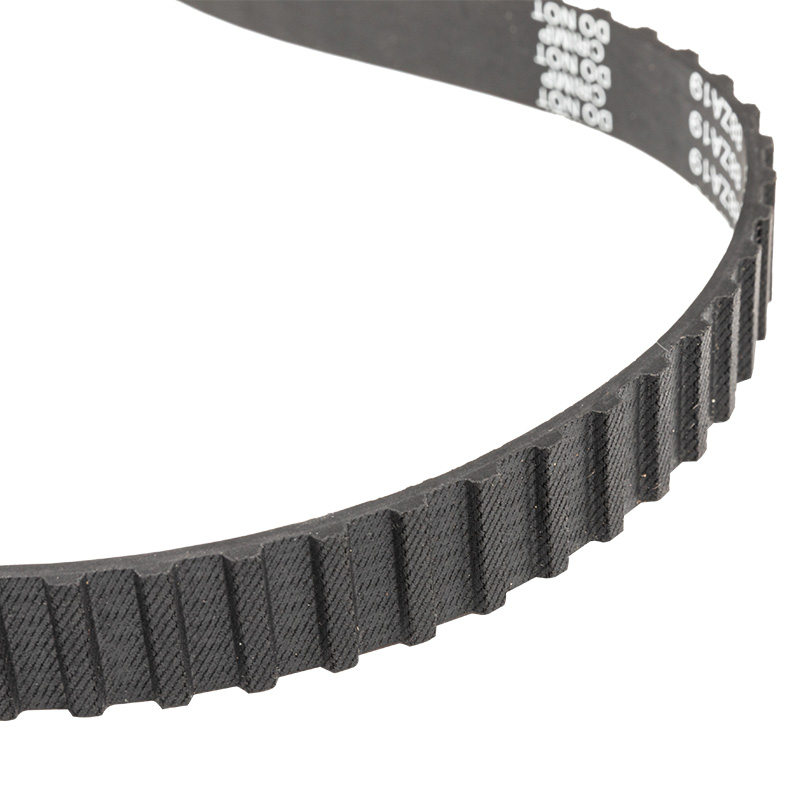Improved Durability: HNBR timing belts are engineered with advanced hydrogenated nitrile butadiene rubber, which significantly enhances their resistance to extreme temperatures, chemical exposure, and wear. Unlike conventional rubber, HNBR exhibits superior thermal stability, allowing it to operate efficiently in high-temperature environments typical of modern engines. This enhanced durability ensures that the timing belt maintains its structural integrity and mechanical properties over extended periods, reducing the risk of premature failure. As a result, the timing belt's lifespan is extended, minimizing the need for frequent replacements and ensuring reliable engine performance under diverse driving conditions.
Stable Timing: The timing belt’s role in synchronizing the camshaft and crankshaft is crucial for the precise operation of engine valves. HNBR timing belts are designed to maintain precise dimensional stability and resistance to elongation under stress. This precision ensures that the engine's timing remains consistently accurate, even under varying loads and speeds. Accurate valve timing enhances combustion efficiency, which optimizes power output, fuel efficiency, and emissions control. By maintaining definitive timing, HNBR belts contribute to smoother engine operation, reduced vibration, and enhanced overall engine performance, which translates to a more reliable and enjoyable driving experience.
Reduced Maintenance Costs: The definitive durability and longevity of HNBR timing belts bring to a reduction in the frequency of replacements. Fewer replacements translate to lower labor costs and reduced part expenses, offering significant cost savings over the vehicle's lifetime. Additionally, the extended service intervals of HNBR belts mean less frequent maintenance downtime, which is particularly beneficial for fleet operators and high-mileage vehicles. This reduction in maintenance requirements not only lowers operational costs but also contributes to greater vehicle availability and operational efficiency.
Enhanced Engine Efficiency: An HNBR timing belt ensures precise synchronization between engine components, which is critical for peak engine efficiency. Accurate timing improves the engine's ability to achieve definitive air-fuel mixture ratios and combustion processes. This efficiency leads to better fuel economy, as the engine operates more effectively and utilizes fuel resources more efficiently. Improved combustion reduces exhaust emissions, helping vehicles meet stringent environmental regulations and contributing to a lower environmental footprint. Enhanced engine efficiency also means improved overall vehicle performance and responsiveness.
Increased Performance Reliability: The robust nature of HNBR rubber contributes to heightened performance reliability by minimizing the risk of timing belt failures that could bring to engine damage. HNBR timing belts are less prone to stretching, cracking, or breaking compared to belts made from less durable materials. This reliability ensures consistent engine performance and prevents potential mechanical failures that could disrupt vehicle operation. The reduced likelihood of timing belt-related issues enhances overall vehicle dependability, reduces the risk of unexpected breakdowns, and promotes a smoother driving experience.
Noise Reduction: HNBR timing belts are designed to offer outstanding noise-dampening properties, which contribute to quieter engine operation. The material’s flexibility and vibration-absorbing characteristics help to minimize the operational noise and vibrations associated with timing belt function. This reduction in noise enhances cabin comfort by creating a quieter and more pleasant driving environment. For both drivers and passengers, a quieter engine operation improves the overall driving experience, reduces acoustic disturbances, and contributes to a more refined vehicle interior.
Hnbr Rubber Automotive Timing Belts




 English
English 中文简体
中文简体

 View More >>
View More >> View More >>
View More >> View More >>
View More >> View More >>
View More >> View More >>
View More >> View More >>
View More >> View More >>
View More >> View More >>
View More >> View More >>
View More >> View More >>
View More >> View More >>
View More >> View More >>
View More >>
